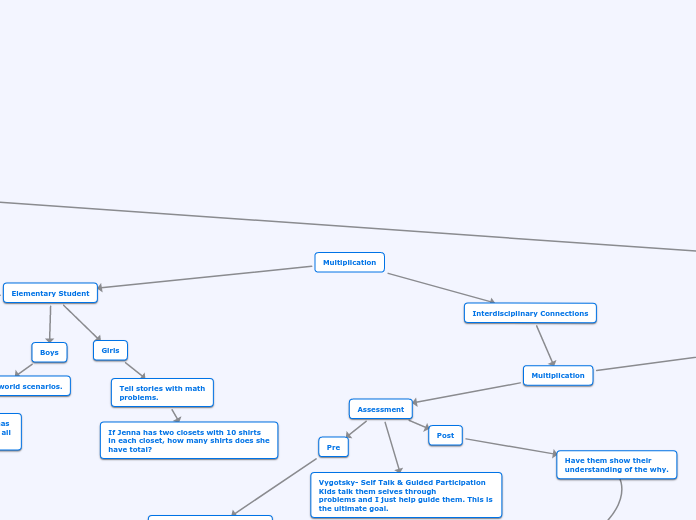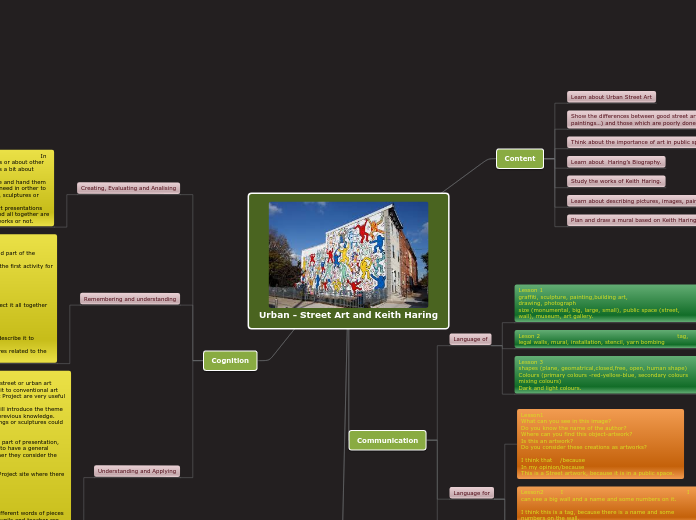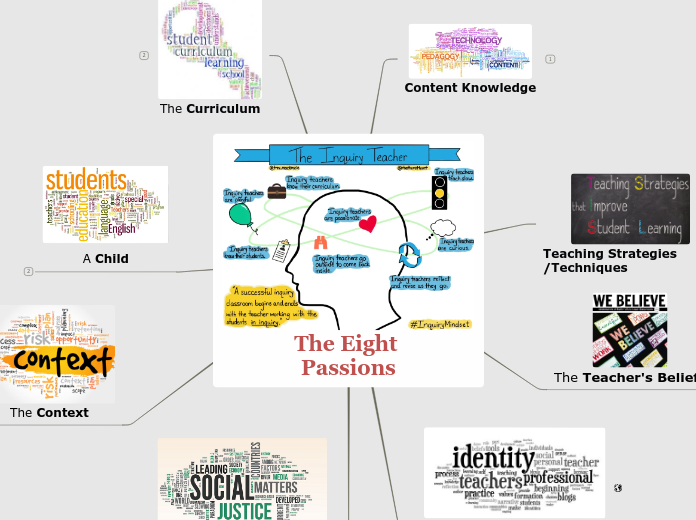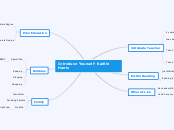Piaget's concrete operational stage.
Deductive reasoning and can reason
through transformation
Once they are able to reason comfortably with addition then they are ready to move onto multiplication.
Multiplication
Interdisciplinary Connections
Assessment
Vygotsky- Self Talk & Guided Participation
Kids talk them selves through
problems and I just help guide them. This is the ultimate goal.
Post
Have them show their
understanding of the why.
Pre
What's their understanding
of multiplication?
Do they understand the why behind
solving the equation?
Example of the "why".
23 multiplied by 17.
Why when solving this
problem do we put a two over
the two in 23. What does it represent?
Why do we put a zero, in the second
row of numbers?
This is the kind of understanding I
want from the students. I don't want
them to just know how to do it, I want
them to know why they are doing each
step.
What is multiplication?
Multiplication is repeated addition.
25*4 is the same as
25 + 25 + 25 +25
Using this example I would teach
the students how to multiply using
the standard algorithm.
Over generalization - If I taught my
students that you must carry every time you multiply a number together then that would be a over generalization.
Under generalization - If I were to
say that you only need to carry sometimes
without explaining the reasoning, that would be under generalizing.
Students may over or under
generalize in their algorithms by having faulty algorithms.
Example: If you don't explain what the
numbers represent when carrying they may just add the carried over number to the ten place and multiply that number by the number on the bottom. This would be under generalizing because they know that they need to carry but not what the number represents.
----->2
37
* 4
______
208
One way I would teach my students
how to do this is through blocks.
Giving the students a problem
like 106* 17. This problem would
be very hard with blocks and would
take forever.
We will use 10 * 5.
Using blocks of ten I would ask them to
solve the problem. They would see that they need 5 blocks of ten and count the total number of blocks to get their answer.
Elementary Student
Girls
Tell stories with math
problems.
If Jenna has two closets with 10 shirts
in each closet, how many shirts does she
have total?
Boys
Give them real world scenarios.
If there are 3 cars and each car has
4 tires, how many tires are there all
together?
Ages 7 to 11
Piaget's concrete operational stage.
Child is able to use logical
thought when solving problems.
For the older kids I would
advance to harder concepts
such as multiplying two digit
numbers together, which introduces
carrying.
For the younger students
I would start with simple multiplication
problems and have them use blocks.









